1. wine from Rheinhessen
Wine is at the top of our list, because Rheinhessen is Germany's largest wine-growing region, with over 25,000 hectares of vineyards. 70 percent of the vineyards are planted with White wine grape varieties, the remaining 30 with Red wine grape varieties planted. Müller-Thurgau and Riesling as well as Dornfelder are most frequently represented in terms of area.
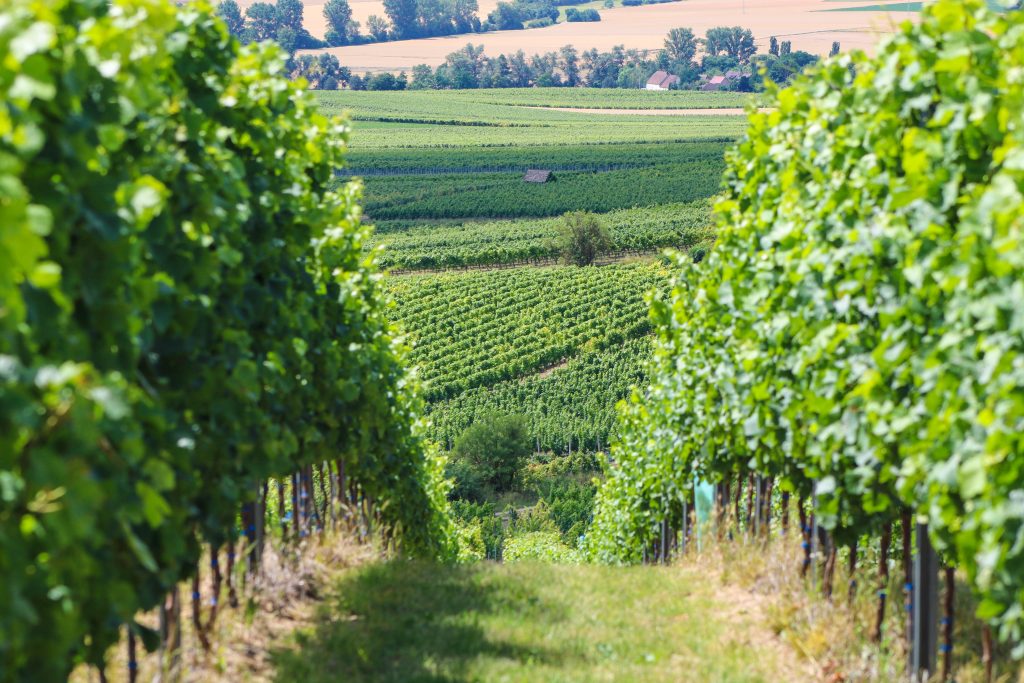
A true traditional wine from Rheinhessen, on the other hand, is the Silvaner. Around 100 years ago, the variety accounted for almost two-thirds of the vineyard area in Rheinhessen. Then it fell into oblivion somewhat, but is now making a name for itself again - thanks in part to the new, young generation of winemakers who are breathing new life into it.
The juicy, spicy Huxelrebe is a real Rhine-Hessian creation and makes a great aperitif or dessert wine. It was developed in 1927 at the the Landesanstalt für Rebenzüchtung in Alzey from the white wine varieties Elbling and Courtiller Musqué. It is named after Fritz Huxel, a winemaker from and friend of the Huxel grape breeder Georg Scheu.
2. wine taverns in Rheinhessen
Where there is wine, there is a typical Rhinehessian wine tavern not far. It has nothing to do with exotic fowl. The name comes from the fact that the economy traditionally hangs a branch, wreath or even bouquet of vine leaves on the door, signaling that it is open.
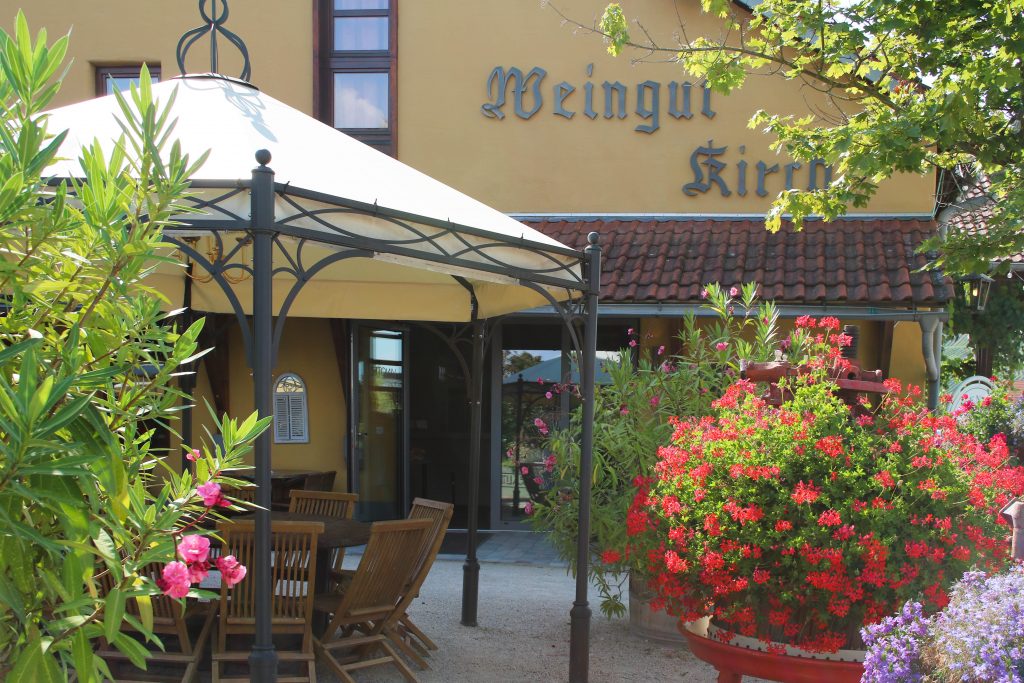
By the way, there are clear rules for Straußwirtschaften. They may only be open for four months of the year, may only serve serve only home-produced wine and serve only "simple dishes". But the are always authentic and delicious in Rheinhessen. And they go wonderfully with the with the wine. We only say "Spundekäs"...
3. Rheinhessen bung cheese
It almost doesn't get any more typically Rhine-Hessian than this. The Bung Cheese, a cream cheese with peppers, onions and spices, is the ideal base for any wine tasting. The traditional elongated shape in which the cheese is served is reminiscent of the bung of a wine barrel, hence the name.
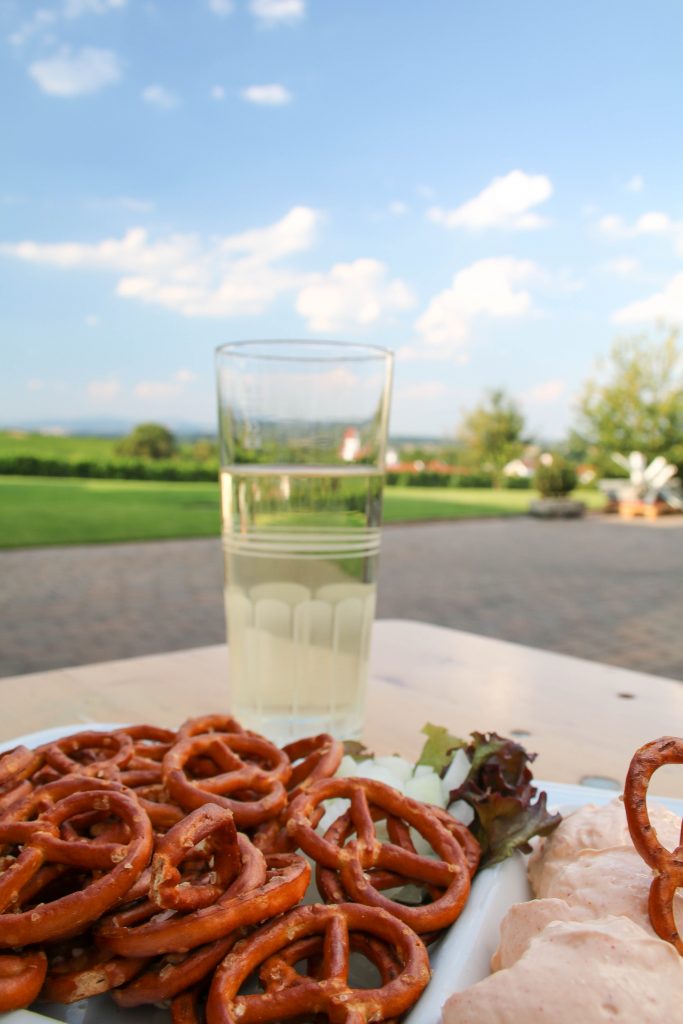
Every Rhineland Hessian prepares Spundekäs a little a little differently, there are no limits to the imagination. In addition a fresh bread and a cool bread and a cool glass of white wine ... What could be better?
4th Rheinhessen Wine Vault
Besides the already mentioned Straußwirtschaften there are many Gutsschänken and wine tasting rooms in Rheinhessen. Some of them are located in former, lovingly renovated cattle barns with cross vaults. cross vaults. These "Kuhkapellen" represent a special chapter in the architectural history of architectural history of Rheinhessen.
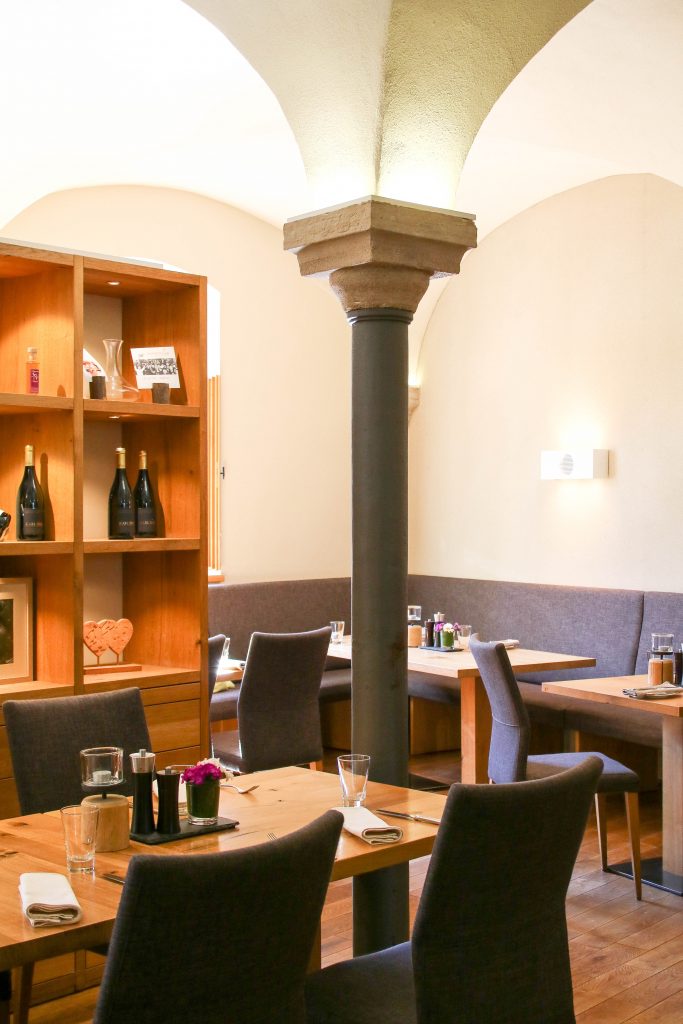
At the beginning of the 18th century, stable keeping was intensified, so the stables had to become larger. However, the large wooden ceilings with massive beams increased the fire hazard enormously, especially since the Rhine-Hessian farms were densely built-up. Light brick vaults were supposed to provide a remedy - an unusual and probably not entirely cheap, but effective measure that was implemented on many farms. The cows lived under now beautiful cross vaults and their farmers were happy about lower epidemic and fire risk compared to conventional wooden stables. Thus, in the 19th century hundreds of Cross vault stables according to monastery model.
5th Rheinhessen wine festivals
Whether in the middle of the village or in the Rheinhessen wine festivals are known far beyond the borders of our region. beyond the borders of our region. They stand for conviviality, simplicity and pure joie de vivre. pure. Each wine village interprets its festivals a little differently, but everywhere you can find live music, regional specialties and, of course, excellent wines from the local vintners. local winegrowers.
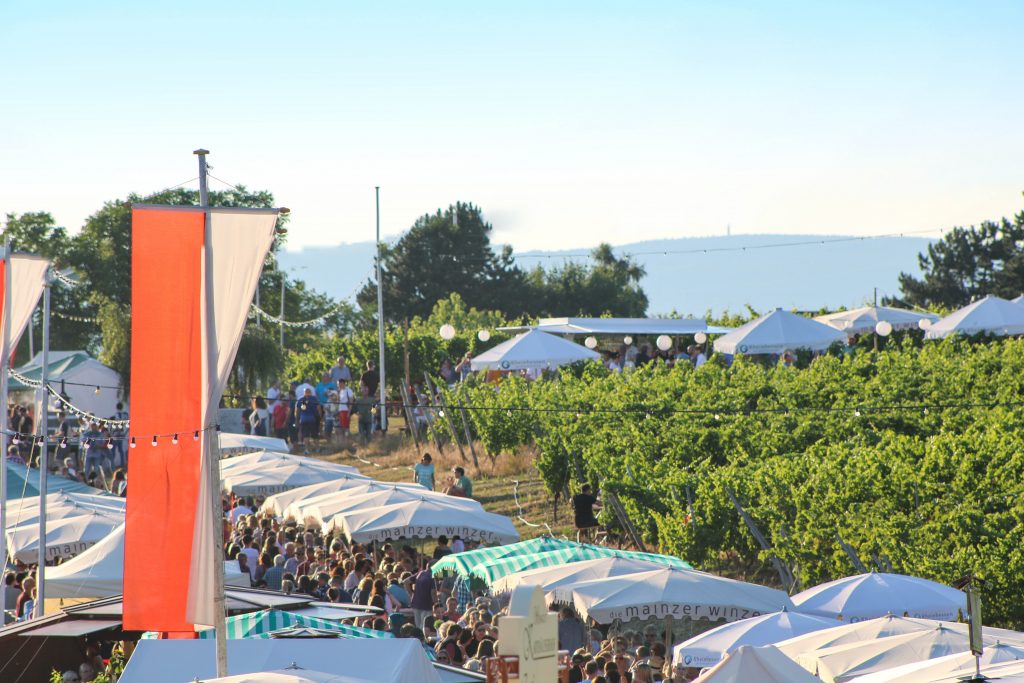
Visiting a wine festival in Rheinhessen is practically a must, and since they take place throughout the summer months, chances are you'll be able to join in the celebration! We recommend our EXCELLENT-Wineproof. They stand for special quality and that little extra.
6. rhine hessian hilly landscape
At wine festivals, it is not uncommon for you to enjoy a magnificent view of the region's rolling hills. Rheinhessen is not called the "land of 1000 hills" for nothing. The elevations with plateau character reach up to around 300 meters. The hills, or "Hiwwel" as we say, you can see on our nine Hiwwelt tours explore
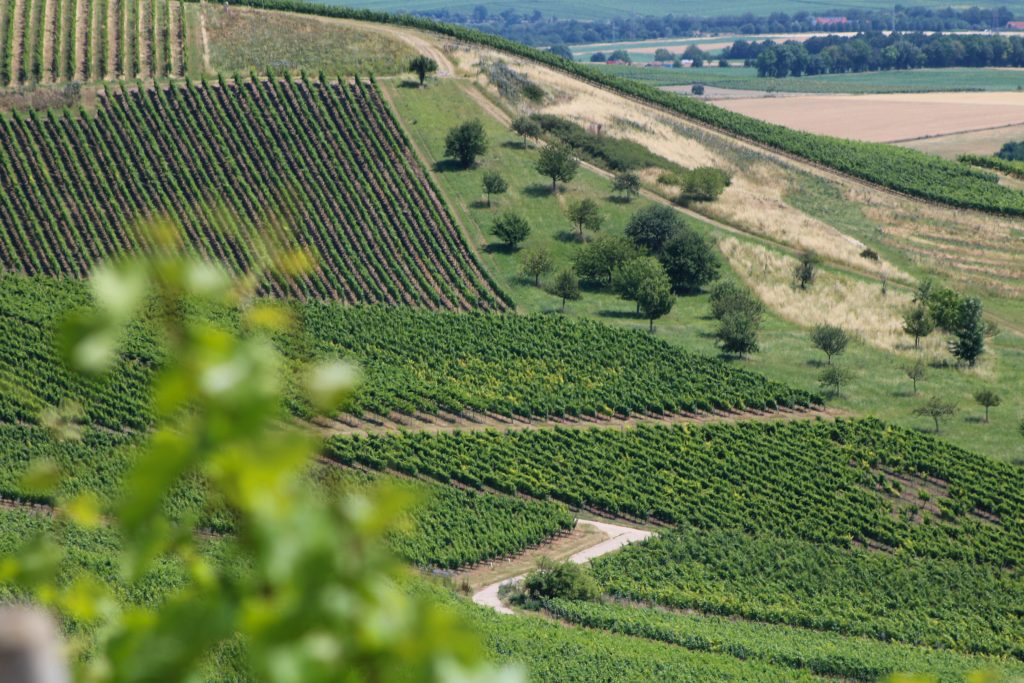
The certified Prädikat circular hiking trails lead you through secluded valleys and high up into the vineyards. Again and again you can stop beautiful viewpoints Rest and try to count all 1000 hills.
7. trulli from Rheinhessen
If you are on the Hiwweltour Aulheimer Valley on the way, you will pass a small white house in the middle of the vineyard - a trullo. The round house with a pointed roof near Flonheim was built in the 18th century. It is said that it was built by Apulian guest workers who were inspired by the architecture of their homeland.
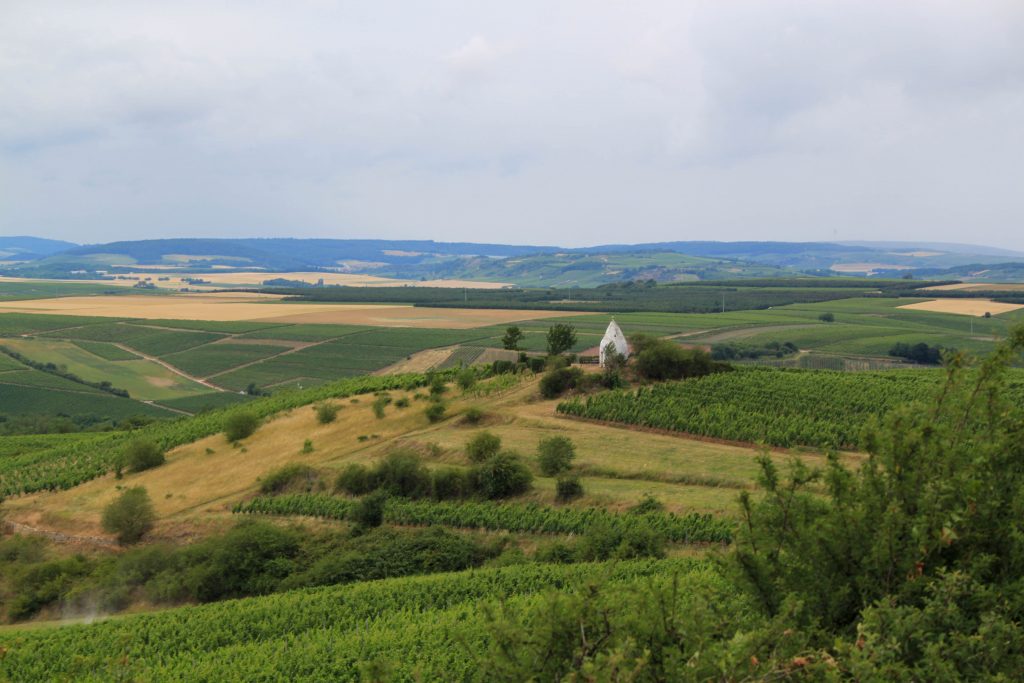
Vineyard cottages are not uncommon in Rheinhessen. Traditionally, they served winegrowers as a shelter for equipment, as protection during storms and as a place for breaks. From historic vineyard cottages and towers with special history up to modern minimalist cottage you can find everything in our vineyards. Many are landmarks of their respective wine villages.
8. rhinehessian sandstone
The Apulian guest workers just mentioned workers used to work in the many sandstone quarries around Flonheim. worked. The rock is the product of a primeval sea that flooded Rheinhessen millions of years ago. millions of years ago.
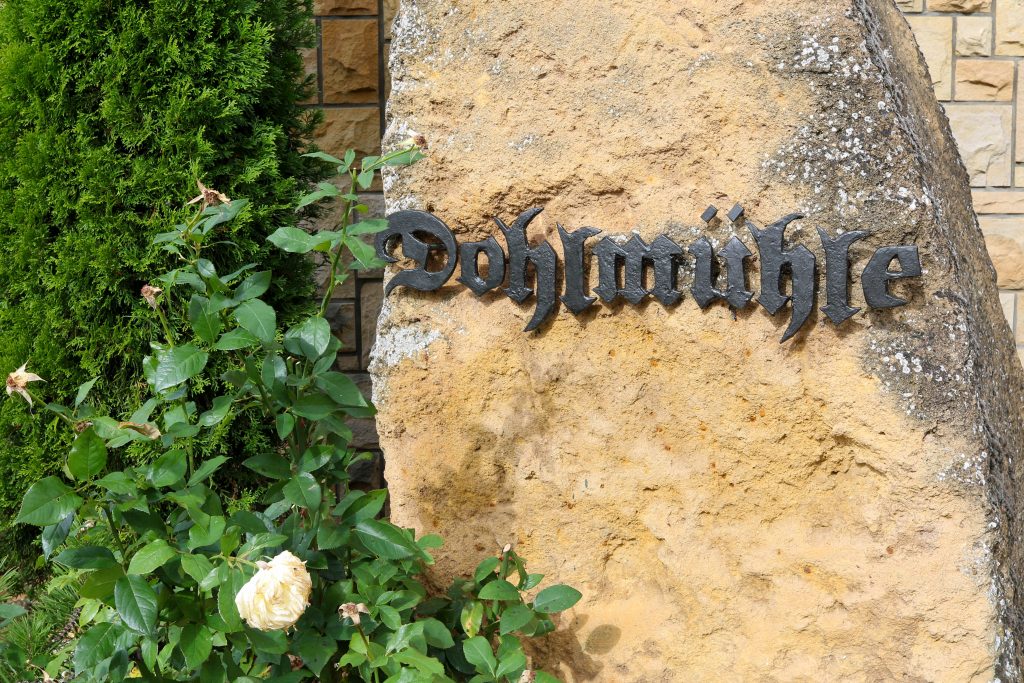
The light yellow sandstone is wonderfully workable and has therefore been used as a building material for many buildings in the region and beyond. Historical contracts prove that Flonheim sandstone was even used in the Cologne Cathedral was used.
9. Rheinhessen's Nibelungen
The imperial cathedral in Worms also has a sandstone facade. This is restored every year as part of the Nibelungen Festival and is thus closely interwoven with the festival.
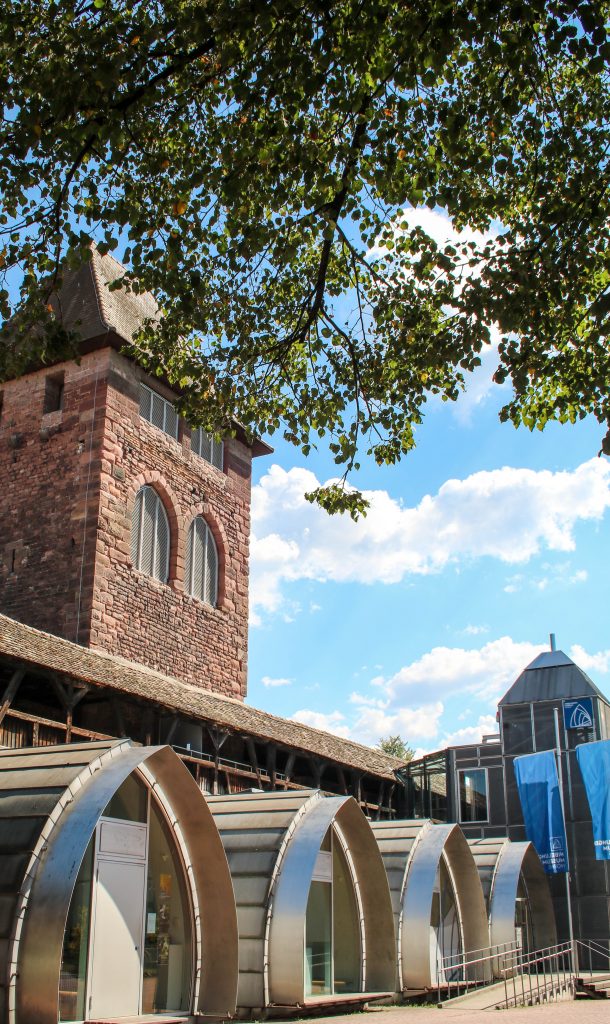
Just as Worms and the saga are firmly connected. Indeed, most of the scenes of the medieval heroic epic by an unknown poet are set in and around Worms. The dragon-slayer Siegfried, Brunhild, Kriemhild and Hagen are present everywhere in the Nibelungen city, especially in the multimedia Nibelungen Museum, which is integrated into the Hohenstaufen city wall.
10. dialect of Rheinhessen
The best comes at the end! Rhoihesse babble Rhoihessisch - and are mighty proud of it, after all it is the most beautiful dialect in the world, isn't it? You can see for yourself, for example, during a Dialect tour of Dalsheim with the wife of the night watchman convince. Along the famous Fleckenmauer you will learn a lot about the history of Rheinhessen and what traces this has left in the dialect.
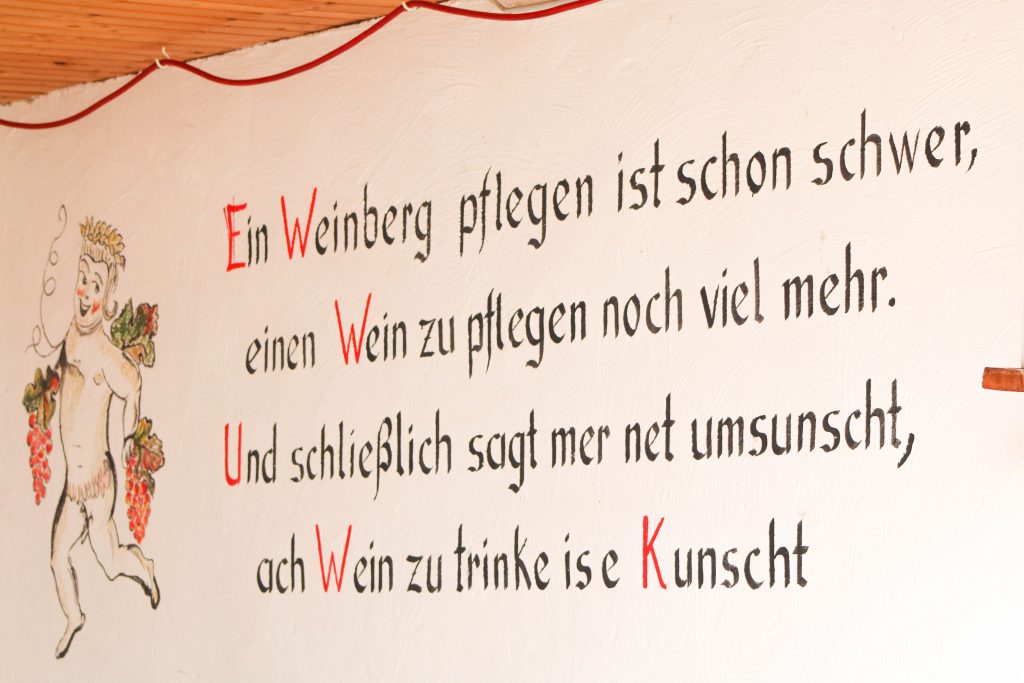
Of course, not all Rheinhessian is the same. Rheinhessian. In the southwest, you can hear a Palatine tinge, in the northeast the dialect northeast, the dialect is reminiscent of southern Hesse. Germany-wide most most well-known is probably the Mainz form, the Meenzerische, not least not least thanks to the Fastnacht.
What would you add? What makes Rheinhessen special for you? What would you miss tremendously? Let us know in the comments!

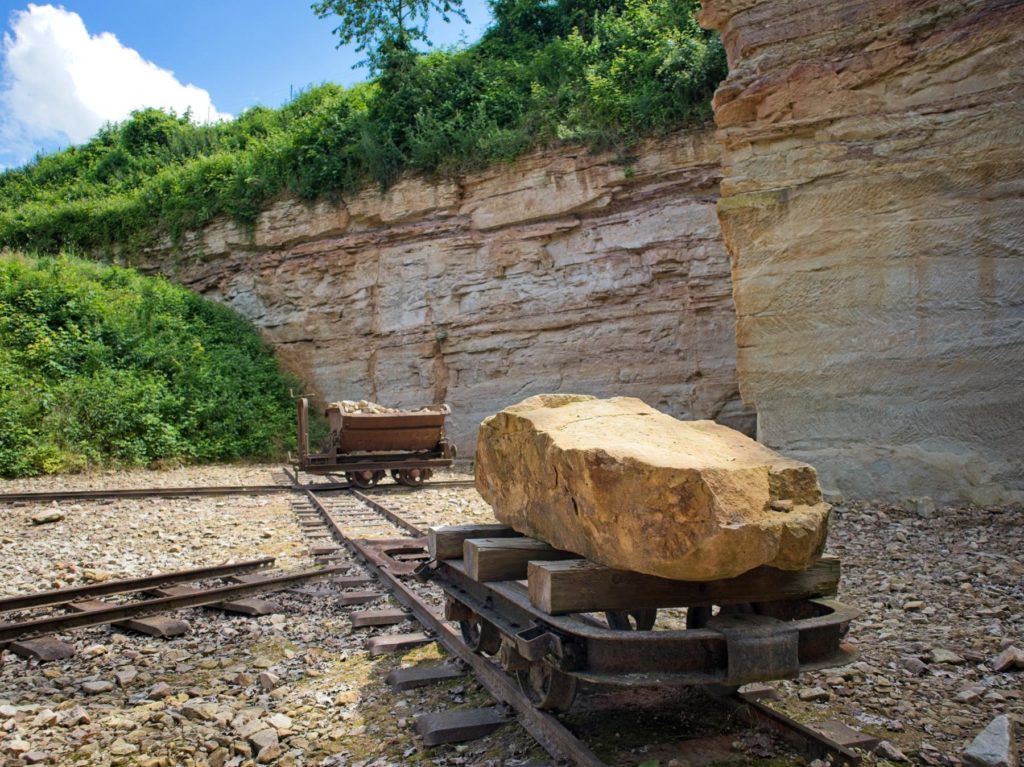
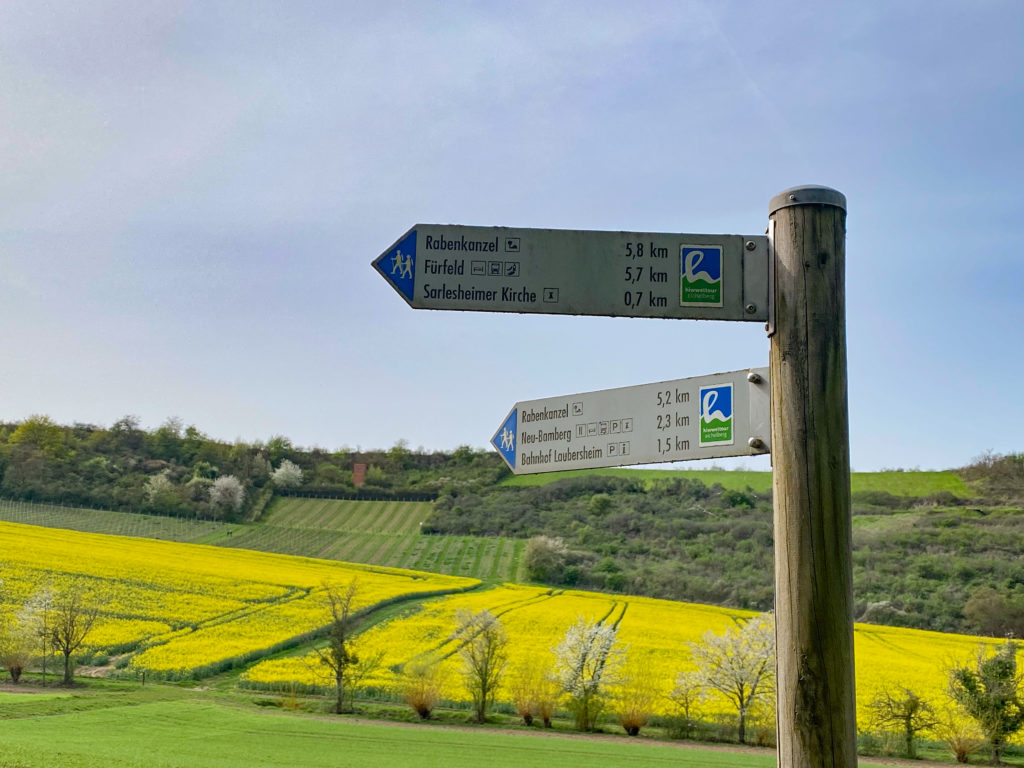
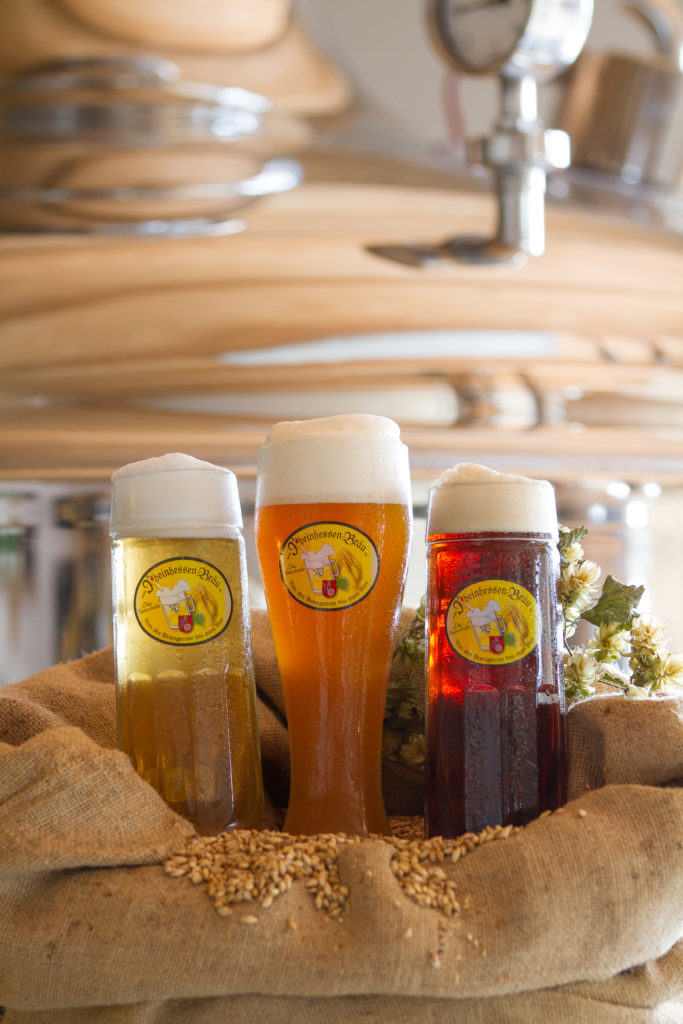
6 Responses
What else is Rhinehessian? Our Rhoi Nadierlisch! Our father Rhoi, from whom we have a part of our name and who lovingly takes us in his arms.
The Dampfnudel with wine sauce used to be served every Saturday and Quetschekuche and potato soup
Incidentally, the wine saying comes from the Mainz carnival entertainer Adolf Gottron. He recited it for the first time at a carnival session in 1949.
In the original it reads:
Tending a vineyard is already difficult
A wine to care, even more so,
And after all, we don't say "umsunst":
To drink wine is an art !
MAINZ 05 NO LONGER IN THE BUNDESLIGA.
Mainz remains 1 (hopefully):-)
I am very pleased that the night watchman tour is mentioned. The night watchman's wife also makes an effort to present the tour in "de Muddersproch", even if there is a risk that it is not always understood. Many greetings from the "night watchman's wife".